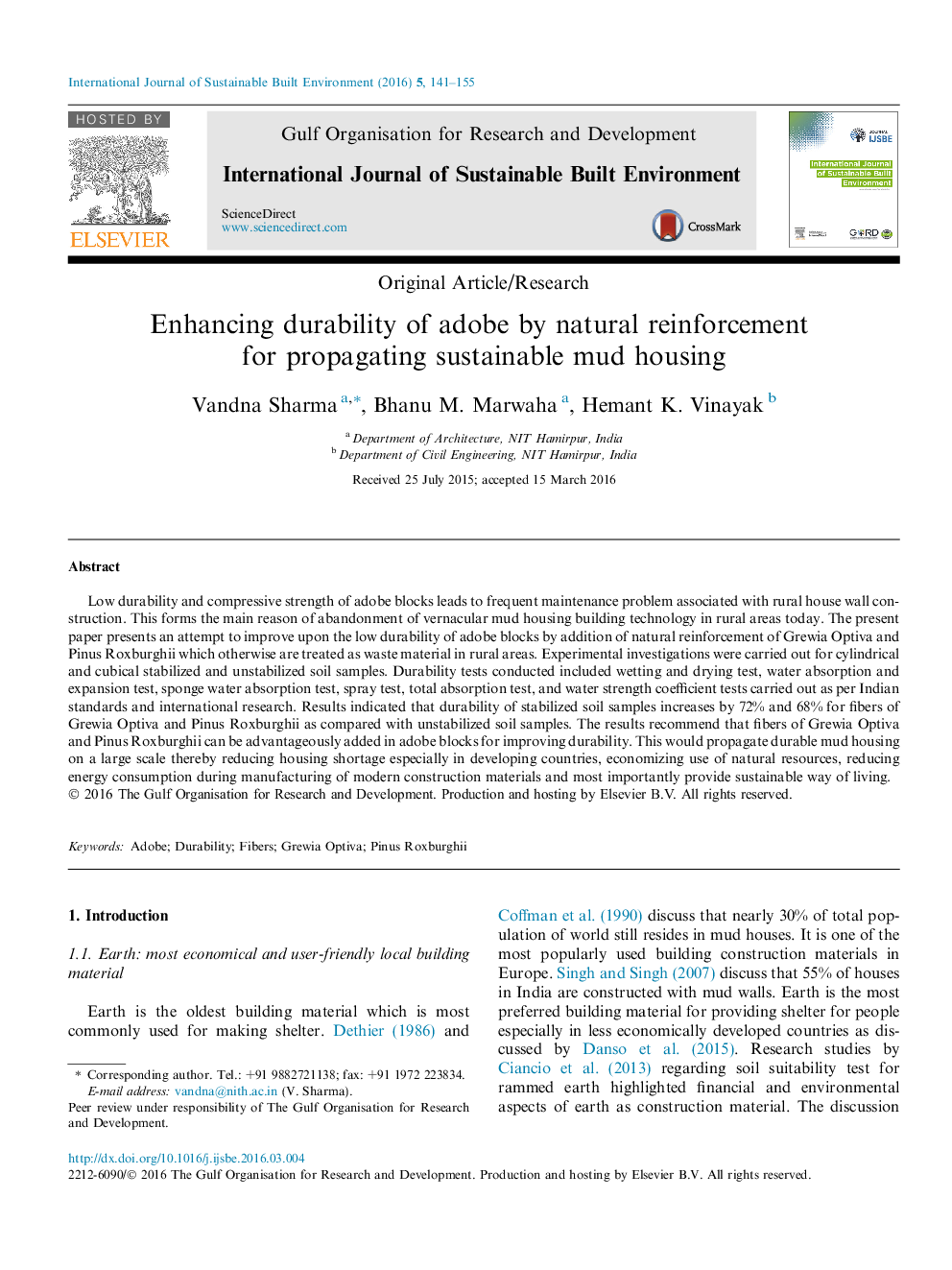| کد مقاله | کد نشریه | سال انتشار | مقاله انگلیسی | نسخه تمام متن |
|---|---|---|---|---|
| 214749 | 1425932 | 2016 | 15 صفحه PDF | دانلود رایگان |
• Adobe bricks made up of Sand Clay soil have low durability.
• Stabilization with fibers of Grewia Optiva and Pinus Roxburghii proposed.
• Durability tests conducted as per Indian standards and international research.
• 162 modular stabilized and unstabilized samples laboratory tested.
• Fiber reinforced samples showed enhanced durability up to 72% and 68%.
Low durability and compressive strength of adobe blocks leads to frequent maintenance problem associated with rural house wall construction. This forms the main reason of abandonment of vernacular mud housing building technology in rural areas today. The present paper presents an attempt to improve upon the low durability of adobe blocks by addition of natural reinforcement of Grewia Optiva and Pinus Roxburghii which otherwise are treated as waste material in rural areas. Experimental investigations were carried out for cylindrical and cubical stabilized and unstabilized soil samples. Durability tests conducted included wetting and drying test, water absorption and expansion test, sponge water absorption test, spray test, total absorption test, and water strength coefficient tests carried out as per Indian standards and international research. Results indicated that durability of stabilized soil samples increases by 72% and 68% for fibers of Grewia Optiva and Pinus Roxburghii as compared with unstabilized soil samples. The results recommend that fibers of Grewia Optiva and Pinus Roxburghii can be advantageously added in adobe blocks for improving durability. This would propagate durable mud housing on a large scale thereby reducing housing shortage especially in developing countries, economizing use of natural resources, reducing energy consumption during manufacturing of modern construction materials and most importantly provide sustainable way of living.
Journal: International Journal of Sustainable Built Environment - Volume 5, Issue 1, June 2016, Pages 141–155
